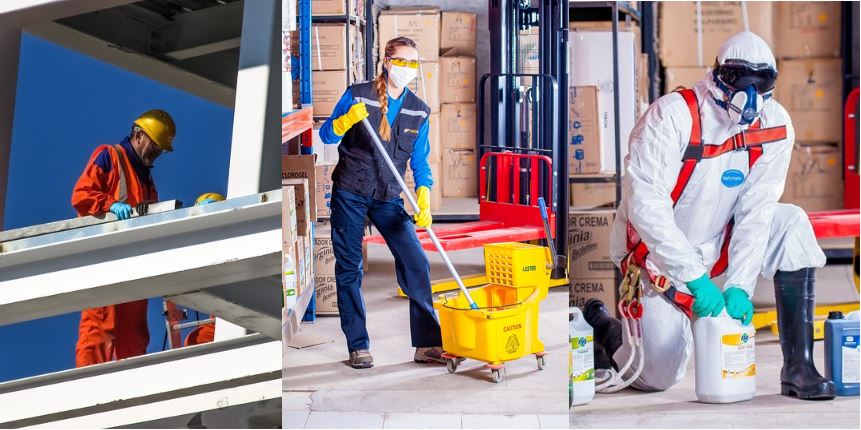For many people in the workplace, HS&E can be a challenging, even contentious, subject. From an employees’ perspective, the evolving nature of technologies and workplace risks could result in training sessions and new practices that could be considered unnecessary. In some cases, they may be viewed as overly prescriptive and possibly even restrictive, when juxtaposed with how people currently conduct their work.
 Similarly, senior staff may find it difficult to determine how much time and budget should be allocated to various health and safety initiatives, when implementing change.
Similarly, senior staff may find it difficult to determine how much time and budget should be allocated to various health and safety initiatives, when implementing change.
Despite these concerns and frustrations, HS&E is vital for improving the wellbeing and effectiveness of the workforce. So how can your company’s existing approach to health and safety best practices be enhanced to bring these considerations to the forefront, without creating unnecessary resistance and red tape?
Give staff a voice
It is likely that senior members of staff, and health and safety specialists, are the ones who are primarily responsible for introducing new processes. However, if changes appear to be made unilaterally, workers on the ground floor could become frustrated and feel that they are being dictated to. That lack of two-way communication can instil a sense of instinctive resistance, that can be a barrier to successful HS&E implementation.
Health and safety is for the benefit of everyone, and so it should be an issue on which all members of staff are encouraged to have a say. Not only is a collaborative focus likely to minimise resistance, it will also introduce a new perspective from staff who work in different parts of the company. These new voices could be better positioned to identify the HS&E concerns they encounter each day, helping to minimise avoidable incidents and bringing otherwise unconsidered suggestions to the table.
Concerns from staff should not be limited to the physical. Mental wellbeing is equally important to the welfare of staff, but can be far harder to identify than physical risks. As part of a more open health and safety culture, staff should be provided with training and access to an HR specialist to answer questions or raise concerns that may have otherwise been ignored.
Share learnings
A frustration with health and safety that crosses the boundaries of workplaces is the idea that rules and regulations often go too far or are pedantic, putting unnecessary roadblocks between workers and their ability to complete their work effectively.
To change this attitude, it is important to make clear that those who earn industry qualifications, such as IOSH certification or NEBOSH training, are not in the role of teachers, lecturing everyone else. Instead, training is an opportunity to share learnings and to improve knowledge across the board.
By sharing knowledge in this way, staff across various sectors will be able to take this information and apply it to improve best practices in their own fields. Ensuring your health and safety leaders are well trained, and that their knowledge is disseminated through training will, in turn, help the entire workforce to be better informed and aware of the consequences of not following health and safety procedures.
Proactive implementation
For health and safety to become a genuine focus in the workplace it cannot be treated as a chore. An example of this type of inconvenience is the fire drill. In most cases workers will only think about the disruption it causes, rather than the vital role it plays in keeping everyone safe.
Rather than legislated box-ticking exercises, fostering a proactive attitude to health and safety will underline that safety, and by extension the welfare of the staff, is a primary concern of the business. Demonstrating that HS&E is in place for the benefit everyone, and genuinely has employee welfare at its heart, will help to endear staff towards more positive participation.
Demonstrating this commitment does not have to be elaborate. Simply updating the company handbook and introducing regular health and ensuring that training is engaging – seminars rather than lectures – will encourage awareness and active participation in a more positive way.
Keep talking
As technology and working practices continue to evolve, Health and safety also has to adapt to ensure best practices remain relevant. This means that a single training session per year will not be enough to keep up with the latest thinking around topics such as risk analysis and mental health.
While courses can be completed, HS&E will continue to change. For the company’s HS&E strategy to be effective, it has to be a continual dialogue between staff and management that occurs whenever issues are raised, rather than reduced to a quarterly routine.
By giving staff a voice, they will also be taking ownership of their own health and safety conditions. As a daily consideration, health and safety practices will naturally become habitual over time and, combined with the sharing of knowledge from those attending courses, general understanding and appreciation should increase across the workforce.
It is as a communal exercise that developing a safety-focused working environment will be the most effective. As soon as staff feel that safety practices are in place for them, rather than implemented as a legal requirement, it will be able to become an aspect of company culture that benefits everyone.

